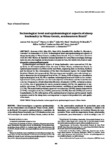Use este identificador para citar ou linkar para este item:
http://www.alice.cnptia.embrapa.br/alice/handle/doc/1013602Registro completo de metadados
| Campo DC | Valor | Idioma |
|---|---|---|
| dc.contributor.author | GOUVEIA, A. M. G. | pt_BR |
| dc.contributor.author | SILVA, M. X. | pt_BR |
| dc.contributor.author | MAIA, J. M. S. | pt_BR |
| dc.contributor.author | BRANDAO, H. de M. | pt_BR |
| dc.contributor.author | SEYFFERT, N. | pt_BR |
| dc.contributor.author | MIYOSHI, A. | pt_BR |
| dc.contributor.author | AZEVEDO, V. | pt_BR |
| dc.contributor.author | GUIMARAES, A. S. | pt_BR |
| dc.date.accessioned | 2015-04-15T11:11:11Z | pt_BR |
| dc.date.available | 2015-04-15T11:11:11Z | pt_BR |
| dc.date.created | 2015-04-15 | pt_BR |
| dc.date.issued | 2014 | pt_BR |
| dc.identifier.citation | Pesquisa Veterinária Brasileira, v. 34, n. 9, p. 865-868, 2014. | pt_BR |
| dc.identifier.uri | http://www.alice.cnptia.embrapa.br/alice/handle/doc/1013602 | pt_BR |
| dc.description | Epidemiological and health aspects of sheep husbandry were assessed on 213 sheep flocks in 142 municipalities from the state of Minas Gerais, southeastern Brazil. An updated questionnaire was filled out for each flock, requesting data on the farm, the flock and the farmer by the veterinarians of the State Government Agency for Animal Health (Instituto Mineiro de Agropecuária). Thirteen important variables were selected and scored to determine the technological level of the 117 farms; 0.9% of them was classified as high technological level, 45.3% as medium technological level and 53.0% as low technological level. Lamb production was the main objective of the farms and the main features were low-frequencies of individual identification of animals (16.9%), technical assistance (31.9%), use of quarantine for newly acquired animals (0.9%) the separation of animals by age group (3.7%) and requeste the sanitary certificate at purchasing of animals (11.7%). The main health problems reported were abortion (23.9%), keratoconjunctivitis (17.9%), contagious ecthyma (13.6%), pneumonia (10.3%), diarrhea (9.3%) and caseous lymphadenitis (6.1%). Information of the epidemiological situation and the mainly health measures used in the sheep farms are important to improve the productivity and quality of the lamb. | eng |
| dc.language.iso | eng | eng |
| dc.rights | openAccess | eng |
| dc.subject | Sheep husbandry | pt_BR |
| dc.subject | Technological level | pt_BR |
| dc.subject | Epidemiological aspects | pt_BR |
| dc.subject | Minas Gerais | pt_BR |
| dc.title | Technological level and epidemiological aspects of sheep husbandry in Minas Gerais, southeastern Brazil. | pt_BR |
| dc.type | Artigo de periódico | pt_BR |
| dc.date.updated | 2015-04-15T11:11:11Z | pt_BR |
| riaa.ainfo.id | 1013602 | pt_BR |
| riaa.ainfo.lastupdate | 2015-04-15 | pt_BR |
| dc.identifier.doi | https://doi.org/10.1590/S0100-736X2014000900010 | eng |
| dc.contributor.institution | AURORA M. G. GOUVEIA, UFMG; GEPOC; MARCOS X. SILVA, UFMG; GEPOC; JULIA M. S. MAIA, UFLA; HUMBERTO DE MELLO BRANDAO, CNPGL; NÚBIA SEYFFERT, UFMG; ANDERSON MIYOSHI, UFMG; VASCO AZEVEDO, UFMG; GEPOC; ALESSANDRO DE SA GUIMARAES, CNPGL. | pt_BR |
| Aparece nas coleções: | Artigo em periódico indexado (CNPGL)  | |
Arquivos associados a este item:
| Arquivo | Descrição | Tamanho | Formato | |
|---|---|---|---|---|
| Cnpgl2014PesqVetBrasTechnological.pdf | 249,15 kB | Adobe PDF |  Visualizar/Abrir |









